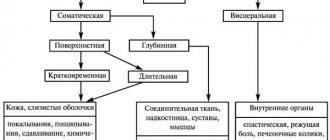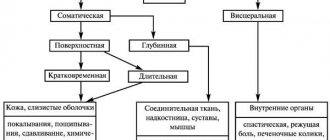Nonsteroidal anti-inflammatory drugs (NSAIDs) are one of the most popular pharmaceutical products. They are prescribed during the treatment of a number of diseases and conditions, often in entire courses. Even with clear instructions from the attending physician, many compatriots have doubts and look for information about drugs on the Internet. And then they come to the pharmacy and ask the pharmacist questions, hoping to justify their guesses or dispel doubts. In this situation, the head manager needs, on the one hand, to help the pharmacy visitor, and on the other hand, not to take on the role of a doctor. It is in this vein that we will cover the topic of topical NSAIDs today - in the form of competent answers to customer questions.
What does “when used correctly” mean? Anointed, and that’s it.
It is advisable to rub in topical forms of NSAIDs for a while rather than just apply them. The analgesic and anti-inflammatory effect of the ointment will be much higher if you do not just “anoint” it, but actively rub the product into the skin over the sore spot for some time. In the course of relevant studies, it was found that even 45 seconds of rubbing diclofenac diethylamine gel five times increased the transdermal delivery of the drug compared to simple application to the skin. And you need to remember that pain-relieving ointments based on NSAIDs act on areas of pain located immediately under the skin. If we talk about joints, then these are the knees, elbows and small joints of the hands. The local form most likely “will not reach the hip joint.” It should be rubbed “around the circumference” of the limb, for example, not only into the dorsum, but also into the palmar surface of the interphalangeal joint [6, 7].
What is pain anyway?
And for what sins does nature torment people? The official IASP (International Association for the Study of Pain) definition is: “Pain is an unpleasant sensory or emotional experience associated with actual or potential tissue damage, or described in terms of such damage.” Let's translate it into human.
Normally, pain is an important and useful thing for survival. This is a clear signal to the brain from some part of the body or from an internal organ: “Hey, pay attention, there is a serious problem here, something needs to be done. Fast!". This signaling system allows a person to avoid too serious injuries and damage: if you feel unpleasant, you will try not to further interact with the cause of your troubles. This means that you are more likely to remain safe and almost unharmed. This is how everything happened during evolution.
The withdrawal reflex is a healthy biological response to acute pain.
But in the unhealthy body of an oncological patient (as well as a patient with cardiovascular disease or HIV, or, for example, tuberculosis), pain loses its useful signaling function and, on the contrary, interferes with both basic therapy and palliative care. The patient becomes depressed and loses the strength necessary to fight the disease. Chronic pain syndrome turns into an independent pathology that needs to be treated separately.
This is why more than a million people in Russia require pain relief every year. Moreover, from 400 to 800 thousand of them (according to various estimates) need opioid analgesics.
Which topical NSAID is best?
Everything is individual. If the analgesic effect of oral and injectable forms of NSAIDs can be more or less ranked, then an objective comparative assessment of topical drugs is very difficult. The reason for this is that, along with the actual active substance, the intensity of rubbing, excipients (for example, dimethyl sulfoxide) and the placebo effect play a significant role. Most studies on the effectiveness of topical NSAIDs have focused on diclofenac and ketoprofen. The increased attention to them is due to the fact that diclofenac is the only NSAID whose topical forms are approved by the American Food and Drug Administration (FDA), and ketoprofen, accordingly, is approved in most other countries of the world. Reliable data comparing these two drugs with each other have not yet been published. No one questions the effectiveness of other non-steroidal anti-inflammatory drugs for external use (ibuprofen, phenylbutazone, piroxicam, nimesulide, etc.); each of them was the subject of several clinical trials at one time, but the geography of their use is much more modest and is often limited to a few developing countries [2, 8].
The main pain is the imperfection of the system
The problem of insufficient provision of strong analgesics to patients with serious diagnoses is one of the most, excuse me, painful problems in Russian oncology in particular and palliative medicine in general.
Yes, you will say that in our private clinic all these processes are well established; patients and their relatives do not have to spend weeks trying to “knock out” the required stamp on the prescription from the doctor, and then win a free package of the drug from the pharmacy. But our doctors have worked in public hospitals for many years, and every week we receive patients who have just come from there, so the gravity of the situation is clear to us.
After the suicide of Rear Admiral Apanasenko in 2014, some progress began, but not everything was as rosy as promised.
Many doctors simply do not want to prescribe because they are afraid. Everyone remembers the high-profile case of Alevtina Khorinyak. She was completely acquitted, but many are also afraid of being put on trial for allegedly “illegal trafficking.”
Patients, in turn, are afraid to take tramadol, considering it something similar to heroin. We hope that the part of the article where we explain about the WHO “ladder” has somewhat organized this information in the minds of citizens.
To ensure that there is no more fear, and therefore potential unnecessary pain, let us explain the procedure required to obtain a narcotic drug.
Do excipients in the local form of NSAIDs matter?
Yes, they improve skin permeability and perhaps enhance the therapeutic effect in a certain way. In separate studies, for example, topical formulations of diclofenac with dimethyl sulfoxide (DMSO) and diclofenac diethylamine 1.16% have been shown to penetrate the skin faster than “regular” diclofenac sodium gels. In addition, DMSO itself may have a slight anti-inflammatory effect. There is no solid evidence of an increase in the analgesic effect due to the listed supplements, but their use at least helps to overcome the individual characteristics of the skin [7, 9–11].
Can I take NSAID tablets and use the topical form at the same time?
This is not directly prohibited by the instructions for use, but it is not recommended, and, apparently, does not make sense. According to the only credible study on this topic, there was no significant increase in the analgesic effect when combining local and systemic forms of NSAIDs. At the same time, this use of drugs slightly increased the frequency of rectal bleeding. In clinical trials, oral administration of diclofenac and ibuprofen at doses 2 and 3 times higher than recommended also did not lead to increased pain relief. The effect of a combination of tablets and a topical form of NSAIDs will most likely not be pronounced. At the same time, the likelihood of unwanted reactions slightly increases. Therefore, this combination is not recommended. Usually, if a local remedy does not help, the doctor cancels it and transfers the patient to oral administration [12, 13].
How much pain, in points?
To choose adequate analgesia, the doctor must understand how much pain the person is in, try to understand where exactly it hurts and for how long. The prescription for pain relief depends on this. In addition to clarifying questions about the nature and location of pain, the doctor must assess its intensity.
All over the world, the NRS (numerological rating scale) and VAS (visual analogue scale) scales are used for this, or hybrid versions, depending on the age and condition of the patient. Very young children and very elderly people, as well as patients with cognitive impairment, may find it difficult to answer standard questions. Sometimes you have to work with such people only by behavior and facial expressions.
Pain rating scale from 0 (no pain) to 10 (unbearably painful)
It is important to obtain as much additional information as possible: if the patient believes that enduring is a worthy activity, and complaining is undignified, or it turns out that the patient has had periods of abuse and addiction, this can make adjustments to the treatment of pain syndrome.
We have already touched on the topic of working with the patient’s psychological state, and we will touch on it again - it is important for both doctors and the patient’s relatives to remember this. WHO even introduced a special concept for this: total pain . It covers not only physical stimuli, but also emotional and social negative aspects of the patient's life.
Considering such a multicomponent pool of causes for increased pain, the world medical community recognizes the most successful idea of “multimodal” therapy - when, along with drug treatment, physical activity within the patient’s strength, relaxation techniques and psychotherapy are used. All this creates conditions under which pain ceases to occupy a central place in the patient’s life, giving way to more important and interesting areas.
Is it possible to use topical NSAIDs for stomach erosions or ulcers?
According to the instructions, it can be done “with caution.” The concentration of the active substance in the blood plasma after the use of topical NSAIDs is less than 10% of that achieved by oral administration. The incidence of adverse reactions from the gastrointestinal tract when using local forms of NSAIDs does not differ from that when rubbing placebo and is significantly lower than when using systemic agents. However, just in case, these drugs are not recommended to be applied to the skin during gastrointestinal bleeding and exacerbation of gastric or duodenal ulcers [5, 14].
How many times a day and for how long can you apply such drugs?
Typically three to four times a day for two weeks. Topical NSAIDs act quite quickly - the effect occurs within an hour - and help control acute somatic pain of moderate intensity. They cope worse with chronic pain. If there is no effect within two weeks of proper use, you should consult a doctor. There is a chance that he will recommend switching to oral forms or another group of drugs.
Sources
- Derry S, Conaghan P, Da Silva JA, et al. Topical NSAIDs for chronic musculoskeletal pain in adults. Cochrane Database Syst Rev. 2016; 4: CD007400. https://www.cochranelibrary.com/cdsr/doi/10.1002/14651858.CD007400.pub3/full
- Derry S, Wiffen PJ, Kalso EA, et al. Topical analgesics for acute and chronic pain in adults – an overview of Cochrane Reviews. Cochrane Database Syst Rev. 2017; 5: CD008609. https://www.cochranelibrary.com/cdsr/doi/10.1002/14651858.CD008609.pub2/full
- Klinge SA, Sawyer GA. Effectiveness and safety of topical versus oral nonsteroidal anti-inflammatory drugs: a comprehensive review. Phys Sportsmed. May 2013; 41(2): 64–74. https://www.ncbi.nlm.nih.gov/pubmed/23703519
- Kloppenburg M, Kroon FP, Blanco FJ, et al. 2021 update of the EULAR recommendations for the management of hand osteoarthritis Annals of the Rheumatic Diseases 2019; 78: 16–24. https://ard.bmj.com/content/78/1/16
- Honvo G, Leclercq V, Geerinck A, et al. Safety of Topical Non-steroidal Anti-Inflammatory Drugs in Osteoarthritis: Outcomes of a Systematic Review and Meta-Analysis. Drugs Aging. 2019; 36(Suppl 1): 45–64. https://www.ncbi.nlm.nih.gov/pmc/articles/PMC6509095/
- Hasler-Nguyen N, Fotopoulos G. Effect of rubbing on the in vitro skin permeation of diclofenac-diethylamine 1.16% gel. BMC Res Notes. 2012 Jun 21; 5: 321. https://www.ncbi.nlm.nih.gov/pmc/articles/PMC3424122/
- Hagen M, Baker M. Skin penetration and tissue permeation after topical administration of diclofenac. Curr Med Res Opin. 2021 Sep; 33(9):1623–1634. https://www.tandfonline.com/doi/full/10.1080/03007995.2017.1352497
- Rafanan BS Jr, Valdecañas BF, Lim BP, et al. Consensus recommendations for managing osteoarthritic pain with topical NSAIDs in Asia-Pacific. Pain Manag. 2018; 8 (2): 115–128. https://www.futuremedicine.com/doi/10.2217/pmt-2017-0047?url_ver=Z39.88-2003&rfr_id=ori:rid:…
- Pradal J, Vallet CM, Frappin G, Bariguian F, Lombardi MS. Importance of the formulation in the skin delivery of topical diclofenac: not all topical diclofenac formulations are the same. J Pain Res. 2019; 12: 1149–1154. https://www.dovepress.com/importance-of-the-formulation-in-the-skin-delivery-of-topical-diclofen-pee…
- Galer BS. A comparative subjective assessment study of PENNSAID® and Voltaren Gel®, two topical formulations of diclofenac sodium. Pain Pract. 2011; 11 (3): 252–60. https://onlinelibrary.wiley.com/doi/abs/10.1111/j.1533-2500.2010.00420.x
- Tieppo Francio V, Davani S, Towery C, Brown TL. Oral Versus Topical Diclofenac Sodium in the Treatment of Osteoarthritis. J Pain Palliat Care Pharmacother. 2021 Jun; 31 (2): 113–120. https://www.tandfonline.com/doi/abs/10.1080/15360288.2017.1301616?journalCode=ippc20
- Simon LS, Grierson LM, Naseer Z, et al. Efficacy and safety of topical diclofenac containing dimethyl sulfoxide (DMSO) compared with those of topical placebo, DMSO vehicle and oral diclofenac for knee osteoarthritis. Pain. 2009; 143(3):238–45. https://insights.ovid.com/article/00006396-200906000-00016
- Van Amburgh J. Can Topical and Oral NSAIDs Be Combined for Pain Relief? Medscape. https://www.medscape.com/viewarticle/861740
- Roth SH. Nonsteroidal anti-inflammatory drug gastropathy: new avenues for safety. Clin Interv Aging. 2011; 6: 125–31. https://www.ncbi.nlm.nih.gov/pmc/articles/PMC3131982/
- Kowalski ML, Makowska JS, Blanca M, et al. Hypersensitivity to nonsteroidal anti-inflammatory drugs (NSAIDs) – classification, diagnosis and management: review of the EAACI/ENDA and GA2LEN/HANNA. Allergy 2011; 66:818–829. https://www.eaaci.org/attachments/668_Kowalski%20Hypersensitivity%20to%20nonsteroidal%20anti-inflamm…
- Rogers NV, Rowland K. An alternative to oral NSAIDs for acute musculoskeletal injuries. J Fam Pract. Mar 2011; 60 (3): 147–8. https://www.ncbi.nlm.nih.gov/pmc/articles/PMC3183960/









